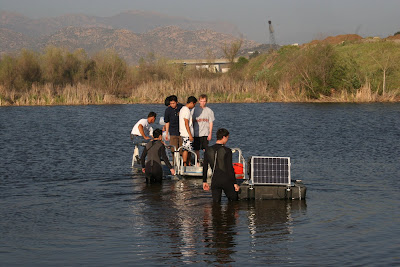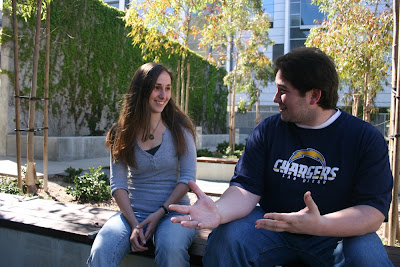
Jacobs School students are working on many different team engineering projects for nonprofit community clients in San Diego. One project that recently wrapped up is a solar powered environmental monitoring system. It floats in a reclaimed water body (is it a pond or a lake or a wetland? any thoughts?) that is part of Lakeside's River Park Conservancy's project to restore the San Diego River. The floating solar panel contraption in the photo above the monitor. It has sensors down in the water that collects all kinds of information. This info gets sent wirelessly to a the conservancy's computer system on dry land, where staff and volunteers can monitor the quality of the water as time goes on.
You can check out the student's final presentation here (it's a PPT file).
You can check out their Web site here.
This is part of TIES (Teams in Engineering Service) program in which undergrads work together on real projects. It's great experience. It's good for the community. It's service learning. And it can help you snag a job. I ran into one of the TIES members at the big undergrad job fair here at the Jacobs School (DECaF). He'd just had an interview with an environmental monitoring company that was interested in him, especially because of his real-world experience with the TIES environmental monitoring program.




